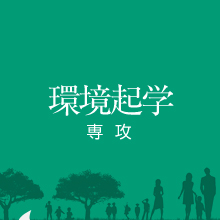環境地理学セミナー7/3
2019-07-03Dear all,
Hello!
This is an announcement of the upcoming Environmental Geography Seminar.
Please see all the details carefully below.
【Date】 3rd. July. Wed. (Time: 15:00~)
【Place】 D101
【Content】
1. Presenters
i. Wang Ting
Study Proposal
Title:Campsite degradation and future management on unmanaged campsites in Daisetsuzan National Park
ii. Mutimba
Advances in Remote Sensing, 2013, 2, 127-139 http://dx.doi.org/10.4236/ars.2013.22017Published Online June 2013 (http://www.scirp.org/journal/ars)
Land Cover Fragmentation Using Multi-Temporal Remote Sensing on Major Mine Sites in Southern Katanga (Democratic Republic of Congo)
Laëtitia Dupin1,2, Collin Nkono1*, Christian Burlet1, François Muhashi1, Yves Vanbrabant1 1Royal Institute of Natural Sciences, Bruxelles, Belgium 2Brussels Environment, Bruxelles, Belgium 3RBNS/Convention on Biological Diversity, Bruxelles, Belgium Email: *cnkono@naturalsciences.be
Received February 24, 2013; revised March 26, 2013; accepted April 2, 2013
ABSTRACT
The study areas are located in the Katanga province to the South Eastern part of the Democratic Republic of Congo (DRC). It focuses on the Kolwezi and Tenke-Fungurume mining centers, located in the vicinity of the Basse-Kando reserve. The 3 study areas have faced large scale human induced the fragmentation of land cover. A combination of ancillary data and satellite imageries was interpreted to construct fragmentation dynamics over the last 30 years. This study is an initial step towards assessing the impact of fragmentation on sustainable land cover in the Katanga. The results bring out that large trends of fragmentation differently occurred over the last 30 years (1979 to 2011) in the three focused areas. The most dominant fragmentation processes were gains in barren soil and cities surface and a sharp reduction in burned areas. In Kolwezi, a close relationship is observed between growth and regression of barren soil and cities over vegetation. The Tenke-Fungurume site shows a growth during the 1980-1990 time slice and regression of vegetation during the following two decades. The Basse-Kando site analyze brings out growth of vegetation and regression of burned area due to vegetation conservation efforts. This is one of the studies in Katanga around mines activities that combine multi-source and spatio-temporal data on land cover to enable long-term quantification of land cover fragmentation.
Keywords: Land Cover; Fragmentation; Katanga; Remote Sensing
iii. Liu Weiqi
Title: Cryospheric hazards and risk perceptions in the Sagarmatha (Mt. Everest) National Park and Buffer Zone, Nepal
Journal: Natural Hazards, March 2019, Volume 96, Issue 2, pp 607–626
Author: Sonam Futi Sherpa, Milan Shrestha, Hallie Eakin, Christopher G. Boone
Year: 04 January 2019
https://doi.org/10.1007/s11069-018-3560-0
Abstract: Glacial lake outburst floods (GLOFs) are among the most serious cryospheric hazards for mountain communities. Multiple studies have predicted the potential risks posed by rapidly expanding glacial lakes in the Sagarmatha (Mt. Everest) National Park and Buffer Zone of Nepal. People’s perceptions of such cryospheric hazards can influence their actions, beliefs, and responses to those hazards and associated risks. This study provides a system- atic approach that combines household survey data with ethnography to analyze people’s perceptions of GLOF risks and the socioeconomic and cultural factors influencing their perceptions. A statistical logit model of household data showed a significant positive correlation between the perceptions of GLOF risks and livelihood sources, mainly tourism. Risk perceptions are also influenced by spatial proximity to glacial lakes and whether a village is in potential flood zones. The 2016 emergency remediation work implemented in the Imja Tsho (glacial lake) has served as a cognitive fix, especially in the low-lying settlements. Much of uncertainty and confusions related GLOF risks among locals can be attributed to a disconnect between how scientific information is communicated to the local communities and how government climate change policies have been limited to awareness campaigns and emergency remediation efforts. A sustainable partnership of scientists, policymakers, and local communities is urgently needed to build a science-driven, community-based initiative that focuses not just in addressing a single GLOF threat but develops on a comprehensive cryospheric risk management plan and considers opportunities and challenges of tourism in the local climate adaptation policies.
iv. Kinoshita
A research proposal
Quantitative Evaluation of the
Attractiveness of Shiretoko
National Park by Using Best -Worst Scaling.
2. Note this:
Please send me the detailed information about your presentation at least 5 days before your turn.
For a paper review: title and author of the paper, journal name, which volume, pages, also the link (if possible) should be provided.
If a paper written in Japanese is going to be presented, please kindly send me the information both in Japanese and English.
【Notice】
※ In case you are absent from the seminar or late for the seminar, please contact Professors or me in advance. Any absence without permission is not allowed;
※ Please be punctual (very important);
※ Please do your full preparation for the seminar;
※ Your active participation is always appreciated;
※ Please feel free to get in touch with me if you have any questions or comments.
Best Regards,
Chang Liang













